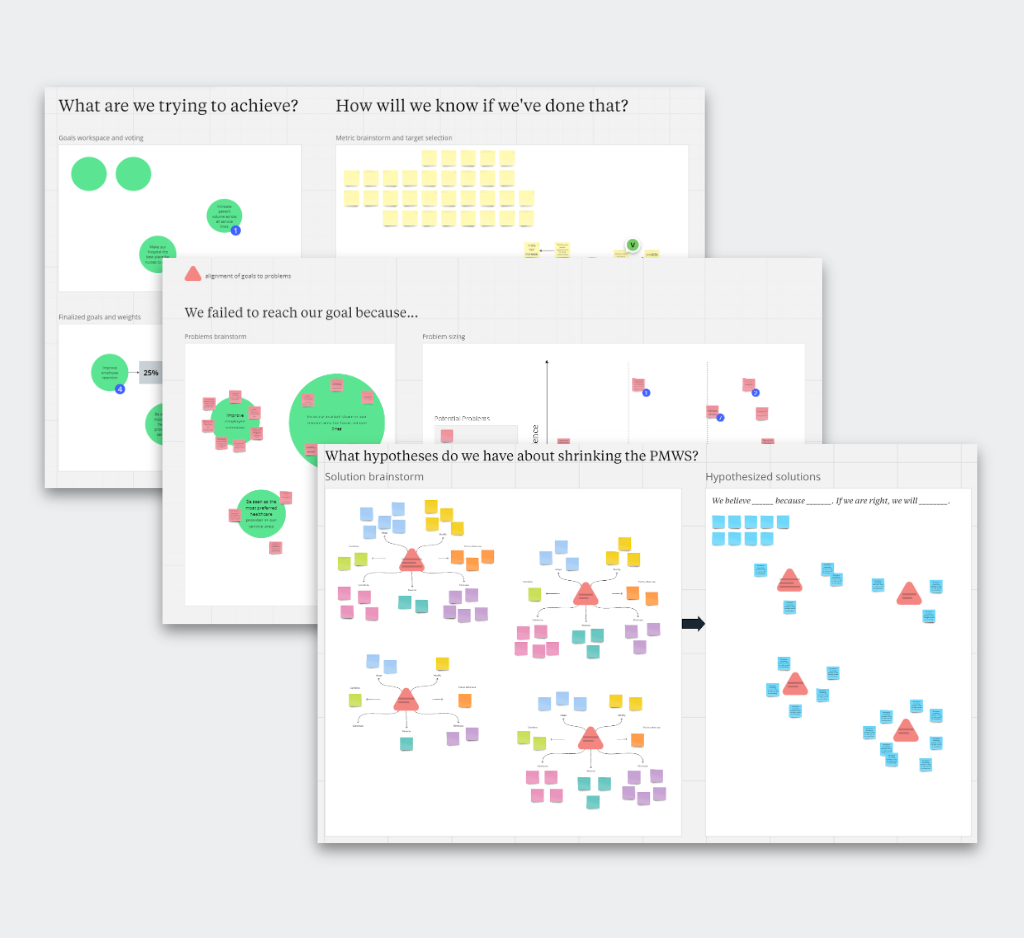Our Approach
We bring an always-on, evidence-based approach for identifying, prioritizing, and validating ideas that drive strategic growth.

It’s easy enough to say, but what is that approach really?
Align on Business Outcomes
Organizations often struggle with clearly establishing meaningful KPIs. They are often either too lofty and aspirational (“Win customers’ hearts and minds”)— memorable, but not clearly defined or measurable—or they document a list of activities (“Launch campaigns on time and within budget”) that don’t inherently link to meaningful business impact.
Through bringing together cross-disciplinary teams, we guide organizations to answer two questions:
1. What are we trying to achieve?
2. How will we know if we’ve done that?
These are both deceptively simple, but they require collaborative alignment on outcomes, metrics, and targets.
Deliver Objective Clarity Through Measurement
The result of this exercise is a foundation of clearly defined business goals, weighted relative to each other in their importance to the organization, with unambiguous alignment on how progress towards those goals will be measured, resulting in a concise and objective performance measurement dashboard.
This dashboard is a persistent means for ensuring that the organization stays aligned on the business outcomes that matter and how progress is tracking against them.
Identify and Focus on Problems that Will Prevent Those Outcomes
With a strong foundation in measurable outcomes, the next step is to identify how those outcomes will be achieved. Or, more effectively, by identifying what problems will prevent the achievement of those outcomes.
Read more about why we focus on problems rather than opportunities or activities.
Mobilize Around The Problems Most Worth Solving
This, too, is a collaborative exercise—tapping into the experience and ideas of a cross-functional team.
The result is a prioritized set of problems, including the problems most worth solving as identified through collaboration and alignment.
Crowdsource Ideas for Shrinking the Problems Most Worth Solving
While there is a temptation to identify a problem and then identify “the” solution to the problem and go and execute on that, this approach promotes tunnel vision—acting on the first identified possible solution and treating it as the only solution.
Our approach is to again use collaboration with cross-functional teams to establish and refine multiple ideas for shrinking the problems most worth solving and then converting each of those ideas into a structured and validatable hypothesis.
Validate Prioritized Ideas (Hypotheses) with Appropriate Rigor
These prioritized ideas—hypotheses—are validated using the most appropriate evidence given the nature of the idea, the size of the problem being addressed, and other contextual factors that drive the overall stakes of the idea.
Validation may be scientific—a rigorously designed and implemented controlled experiment like an A/B test. But, it may also be based on analysis of existing data available to the organization. Or it may simply be collaboratively establishing a target outcome—anecdotal evidence that the team has determined is sufficient for the specific hypothesis.
Elevate and Tell Insight Stories
Not every hypothesis validation activity leads to insight.
However, when insights do emerge, we translate them to clear and impactful data stories that are shared across the organization to increase the institutional knowledge of all business partners.
Adjust and Iterate
While the initial pass through the steps above lays a foundation that ensures research, analytics, and experimentation resources are focused on work that delivers business impact, all of these steps are part of an on-going process:
Checking in on how progress against the identified outcomes is progressing (quickly and objectively)
Updating the problems most worth solving and the ideas for solving them based on both the ideas already validated, actions taken as a result, and shifting market conditions.
Continuous Alignment, Continuous Learning
The approach is deeply rooted in the collaboration and alignment of the people in the organization—tapping into their experience, instincts, and creativity—while applying rigor to use that human work to power evidence-driven growth.

In person collaboration...

...captured as structured data...

...used to power business activities.
This approach is elegantly simple, but brutally hard.
It’s not about implementing more technology. It’s not about integrating the next data set. It’s not about developing the perfect set of dashboards.
It’s fundamentally about human beings connecting, communicating, and collaborating in a meaningful way to bring data to the questions and decisions of the business—not the other way around.







